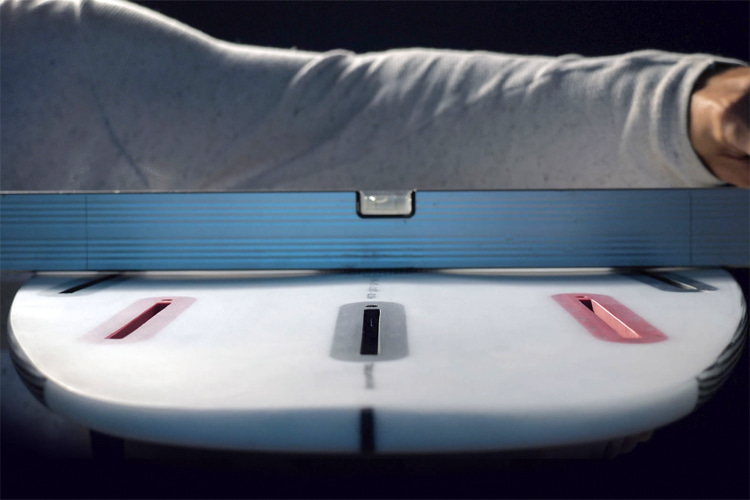From an average surfer's perspective, surfboard shaping variables can be tricky to decode and understand. But some of them can make a change when choosing a board for a particular wave.
One often overlooked but crucial factor that plays a significant role in the performance of a surfboard is the bottom contour.
These seemingly minor variations on the underside of the surfboard significantly impact how the board interacts with the water, affecting the ride's speed, stability, and maneuverability.
The concept revolves around hydrodynamics, the branch of physics concerned with the force exerted by or on liquids in motion.
With the right balance, surfboard shapers can create designs that enhance the surfing experience, matching the rider's skill level, style, and the conditions of the wave.
Whether there's a craftsperson involved or a computer numerical control (CNC) machine bringing a board to life, it's always critical to know which contour to apply to each new plank.
Let's look at the most common designs and how they perform in the water.
Understanding Surfboard Bottom Contours
Flat

Flat bottoms are the simplest of all surfboard bottom designs - they sit perfectly leveled with the surface of the water.
They offer a high degree of stability and are especially good for beginner surfers as they provide a consistent, smooth ride.
Flat bottom boards are also great for small, slow-moving waves, providing ample speed.
However, they can be less maneuverable and slower in larger, faster waves, making turning and carving more challenging.
Single Concave

A single concave design means that the middle of the board is higher than the sides, creating a curved, hollow-like shape.
This contour creates lift and reduces drag, improving the speed and maneuverability of the board.
The concave shape funnels the water under the board, increasing lift and drive and making the board more responsive.
This design is particularly effective in medium to large, fast-moving waves.
Double Concave

The double concave design takes the concept of the single concave and splits it down the middle, near the stringer, creating two parallel concaves.
This design provides the benefits of a single concave - speed and responsiveness - but with an added level of control and stability, especially when carving sharp turns or during high-speed maneuvers.
The double concave effectively splits the water flow across the fins, providing improved control.
High-performance shortboards normally adopt this formula.
Vee

The vee bottom contour is so named because the cross-section of the board resembles a V shape.
This design allows the board to roll from rail to rail with ease, offering smooth, flowing turns.
The vee is excellent for larger, more powerful waves, where control and maneuverability at high speeds are critical.
However, the downside is that they can feel slower in small, less powerful waves.
Belly

The belly contour, or convex contour, is the opposite of concave.
It is rounded outwards, and this creates a design that displaces more water, causing the board to ride higher and thus offer a smoother ride in choppy conditions.
The belly contour is slower but offers a high degree of control and stability.
This design is especially useful for longboards and retro-style boards, often paired with other contours in the tail for a mixed effect.
Channels

Channels are essentially grooves shaped into the bottom of the board, designed to direct the flow of water toward the fins.
This design enhances the board's speed and drive.
Channels are typically combined with other contour designs (like single or double concaves) to achieve a balance of speed, control, and maneuverability.
You can see them in hybrid, experimental, and retro surfboard models.
Common Contour Combinations
Surfboards are often shaped with a combination of these contours - from tail to nose - to achieve the desired balance of performance characteristics.
Here are the most common combinations:
- Shortboards: These typically utilize a single concave or a single to double concave design. The front section is a single concave for speed and drive, transitioning into a double concave towards the tail for increased control during maneuvers;
- Big Wave Guns: These generally favor a convex or belly design, as they provide the stability and control necessary in the powerful conditions of big waves. The convex design can help these boards glide smoothly over choppy surface conditions and maintain control at high speeds;
- Longboards: Longboards often feature a slightly convex design, especially in the nose area, to provide a smooth, controlled ride while nose-riding. The tail may feature a vee or concave for better turning and maneuverability;
The intricacies of surfboard bottom contours underscore the delicate balance of art and science in surfboard shaping.
And you can really tell the difference when you ride different boards in the same type of wave.
Each design offers its unique benefits, and understanding these can help surfers choose the right board for their style and riding conditions.
